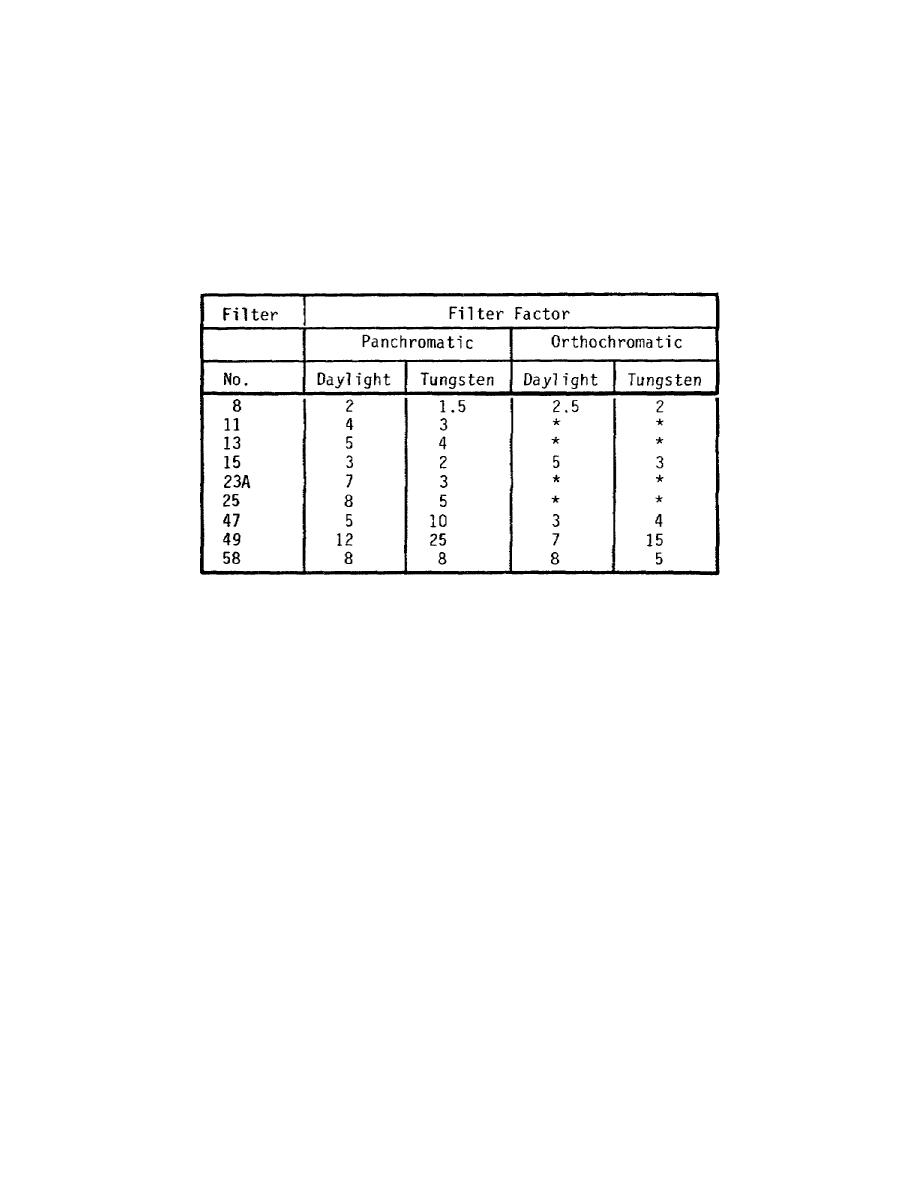
d. Although you do not always notice, there is a color difference between daylight and tungsten
or artificial light. Daylight contains more blue, and most electric lights contain more red. A blue-
absorbing filter such as No. 8, therefore, has a higher filter factor when used outdoors, and a red-
absorbing filter such as No. 47 has a higher filter factor when used indoors with artificial light.
e. The following table, (Table 1-3) shows how the filter factor varies with filter, film, and
illumination. A polarizing screen has a filter factor of about 2.5 for all film under any light because of
its neutral density. The following are general filter factors and may be different for a specific film.
Check the data sheet packaged with the film.
* This filter is not recommended for ortho film except under special circumstances such as male
portraits.
Table 1-3. Film data
f. According to the table, the filter factor for a No. 15 filter used with ortho film and tungsten
light is 3. The table is general and not specific for each of the many varieties of pan and ortho films.
However, filter factor data for a specific type of film is packaged with the film.
2.
Multiple exposure by filter factor.
a. Filter factor compensates for light the filter absorbs. This absorbed light does not reach the
film. This requires that you allow more light to pass through the lens. There are two ways to adjust
exposure for the filter factor. Adjust your f/stop or adjust your shutter speeds by multiplying the factor.
11



 Previous Page
Previous Page
